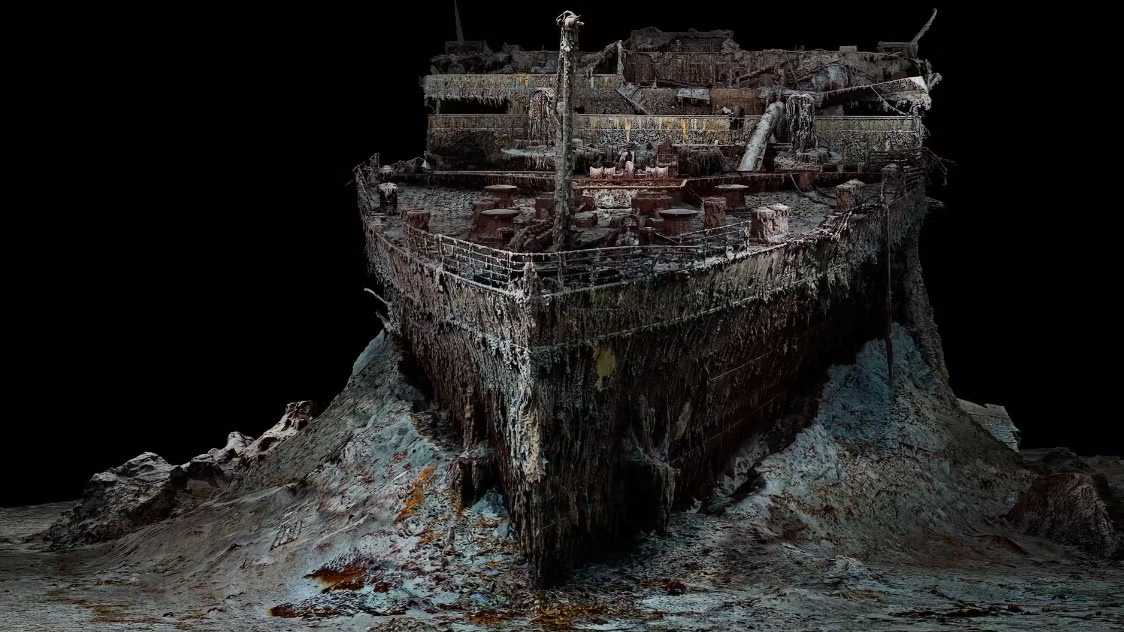Get in Loser, We’re Thinking Critically
- megdeford
- Jun 1
- 4 min read
(or: Myth, Memory & the Machinery of Culture)
“Remember you are dust, and to dust you shall return.”
I’ve been thinking about the Titanic recently. Why has an event that occurred 111 years ago remained in the cultural zeitgeist? And while exploring the why of this, some other examples came to mind: the Gatsby-style glamour that makes its annual comeback every New Year’s Eve, the (honestly shocking) return of the Victoria’s Secret runway show this past Fall, the rise of cowboy aesthetics and “trad wife” romanticism, not as widespread lifestyles, but as curated online identities. These trends hint at a longing for structure, gender certainty, and a slower, simpler past, even if that past never truly existed for most people.
Why do we keep going back? Why do these myths refuse to sink? Why do we, as a culture, continue to repackage the same icons and archetypes, retelling the same stories? At first blush, it feels like nostalgia, but I think it goes beyond that, like a mythological muscle memory. When the present feels unstable, we reach for the familiar not just to remember, but to reassure and guide.
The idea of the American cowboy in media has been portrayed by white, rugged icons like John Wayne, Clint Eastwood, and Kevin Costner, yet the American cowboy and country music are rooted in Black American history. Beyoncé reclaims this in Cowboy Carter, reminding us that some of our deeply ingrained images and ideals are built on selective erasure. Or consider the idea of Victoria’s Secret born out of the Playboy playbook, peddling a version of feminine power that looks suspiciously like commodified liberation via submission to the male gaze, to capitalism, and impossible standards of beauty. I can’t help but think these ideals tied up in lace and fantasy are extensions of the American Dream itself. If you’re desirable, disciplined, and good enough, you will succeed, you will be chosen. But by whom? And for what purpose?
When these myths begin to crack, the pendulum then seems to swing toward moral panic, with loud and emotional pearl-clutching. This particular type of agitation invites us to react rather than reflect. Acting as a cultural chloroform, we reach for these old stories when the present feels chaotic. But here’s the deeper question: Who told the story first, and who benefits from its retelling? When we stop to ask, when we choose to think critically rather than consume passively, we are offered the opportunity to stop confusing legacy with truth.
What if we use these myths not as blueprints but as mirrors? What if instead of repeating and revisiting these stories, we started asking why it’s the story at all? This is where peace enters the chat. Not as avoidance or softening, but as a refusal to perform blindly; a reclaiming of agency in a world that thrives on keeping us blindly purchasing, striving, and swiping.
Two things can be true at the same time, and we don’t have to discard the whole. Take the Trojan Horse, a beautiful package with the gift of destruction inside. This 2,000-year-old tale within The Odyssey and Aeneid still holds weight today, precisely because it’s a warning we keep ignoring. And yet…we’re still fighting wars, still delivering death and devastation in the name of solutions that rarely arrive. If the myth endures, maybe it’s not because we’ve learned, but because we haven’t. How very Cassandra-eque.

This is tough stuff. Conscious critical presence doesn’t always feel good. Stillness in a noisy world is unnerving. We numb because the alternative, feeling, questioning, and confronting, requires real courage. I know I’ve been on a Catholic kick recently, but my ears perked up when Pope Leo XIV recently said:
“In the context of the ongoing digital revolution, we must rediscover, emphasize and cultivate our duty to train others in critical thinking, countering temptations to the contrary, which can also be found in ecclesial circles. There is so little dialogue around us; shouting often replaces it, not infrequently in the form of fake news and irrational arguments proposed by a few loud voices. Deeper reflection and study are essential, as well as a commitment to encounter and listen to the poor, who are a treasure for the Church and for humanity.”
His words remind us: peace isn’t silence. Peace is dialogue, discipline, and discernment. Peace is the courage to listen instead of shout. (And yes, I'm well aware of the mythology deconstruction we can go into for organized religion…)
So what does this all mean for us? It means refusing the siren song, and saying this story isn’t working and I don’t have to inherit it. It means creating a new narrative. In other words, peace isn’t passivity. It’s the product of paying attention. It’s naming what’s beneath the surface and refusing to be seduced by spectacle. And maybe, peace is another way to describe what critical thought feels like in a chaotic world. A quiet resistance.
Turn toward the personal narrative. What stories have shaped your life? What have you been told about success, beauty, love, purpose, and worth? What scripts have you dutifully memorized and have quietly lived inside of? And underneath all of that, what do you actually believe? What matters to you when you tune out the noise?
So I’m asking myself, and if you’re open to it, I invite you to ask yourself: What myths am I still living inside of? What values are mine, and which ones were given to me to carry? How can I move from memorizing to meaning, from being shaped to shaping? Were you silent or were you silenced? (Sorry, I couldn’t help it.)
Let’s stop reciting and start rewriting.
xoxo,
Meghan













Comments